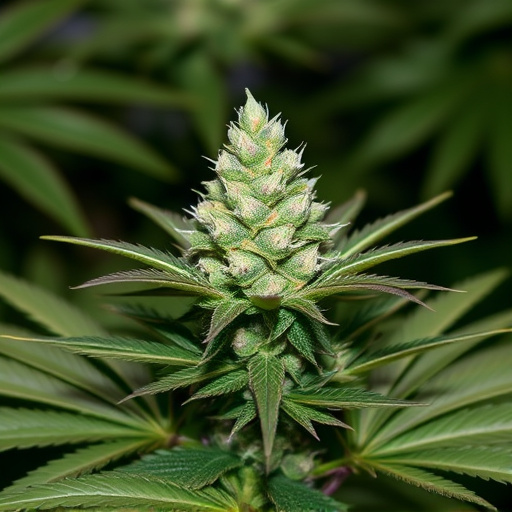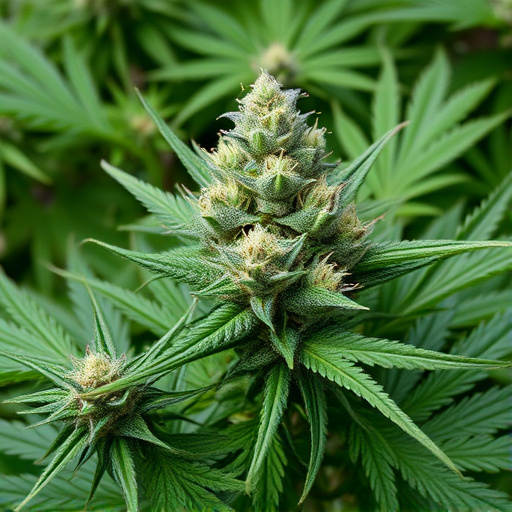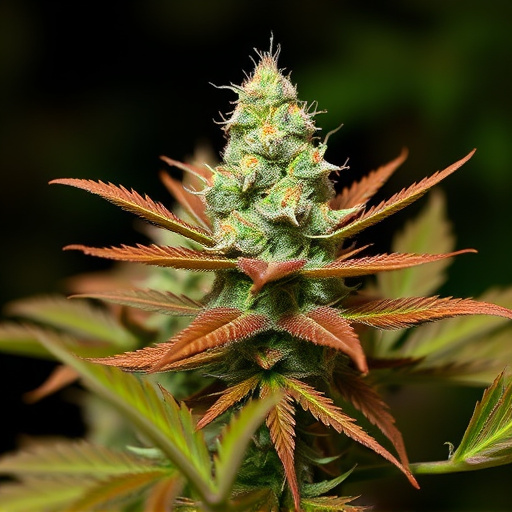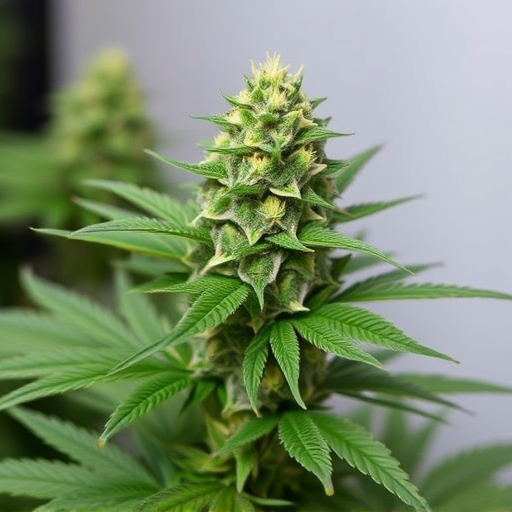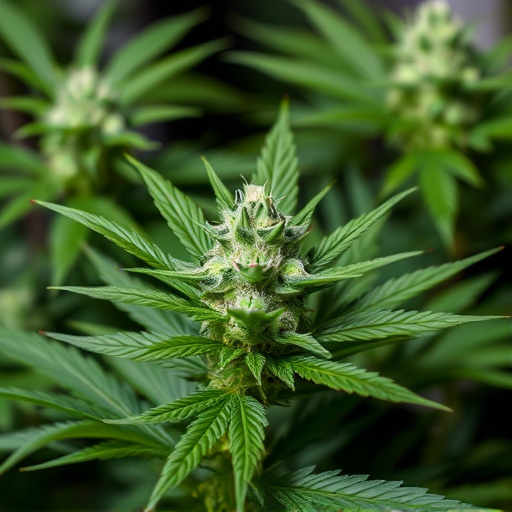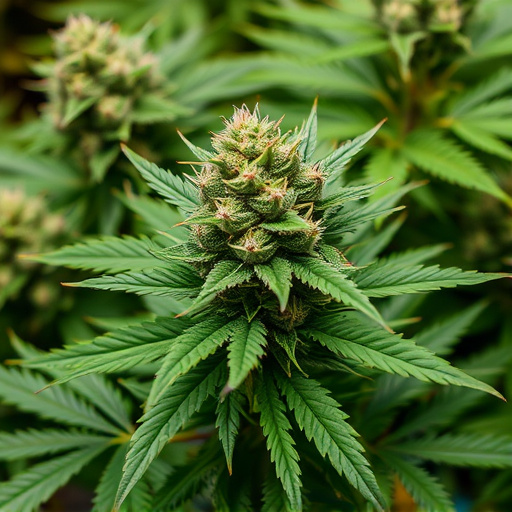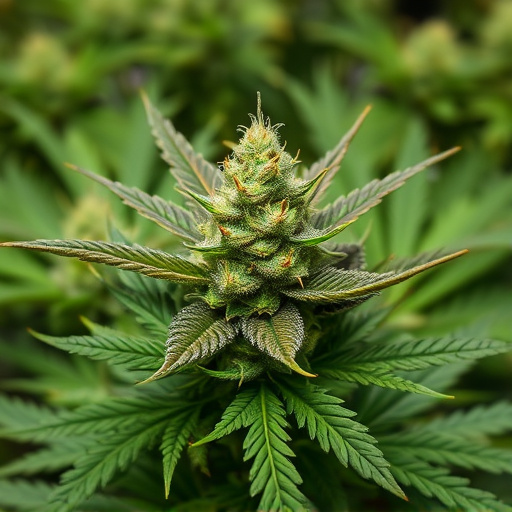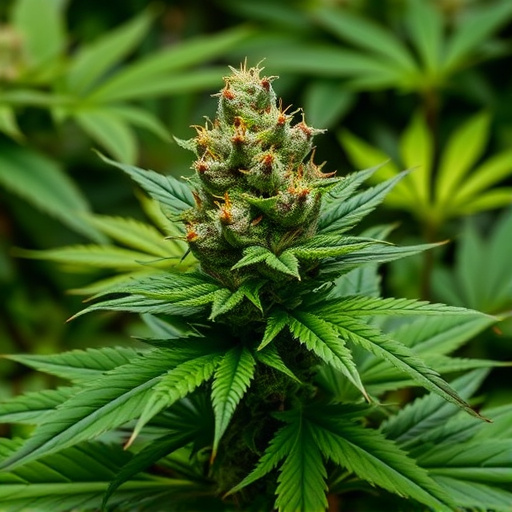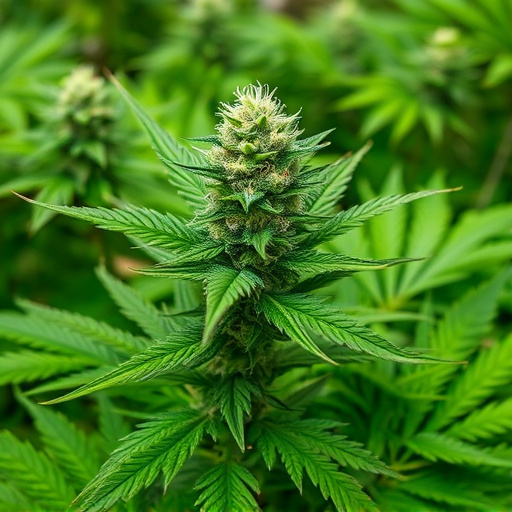High THC cannabis strains significantly increase appetite through their interaction with the endocannabinoid system, binding to CB1 receptors in brain areas regulating food intake and pleasure. This effect, known as "the munchies," serves as an evolutionary survival strategy and is utilized by many for nutritional purposes. Understanding this THC-ECS relationship highlights potential medical applications for conditions involving eating disorders or weight loss, emphasizing the value of high THC cannabis strains.
Cannabis flower’s ability to stimulate appetite is well-documented, with many users attributing this effect to their desire for snacks after consumption. This phenomenon is largely attributed to tetrahydrocannabinol (THC), the primary psychoactive compound in cannabis, which interacts with the endocannabinoid system. Specifically, THC binds to CB1 receptors in brain areas linked to appetite and pleasure, leading to increased hunger.
High THC cannabis strains, now prevalent in the market, have driven interest in understanding this relationship better. With breeders consistently developing varieties boasting higher THC levels, these strains warrant exploration for their unique effects on users’ appetites. This article delves into the science behind cannabis’ impact on hunger, considering current research and individual variations.
- The Role of THC in Appetite Stimulation
- – Explanation of tetrahydrocannabinol (THC) and its effects on the endocannabinoid system
- – How THC binds to CB1 receptors in the brain, particularly in areas associated with appetite and pleasure
The Role of THC in Appetite Stimulation
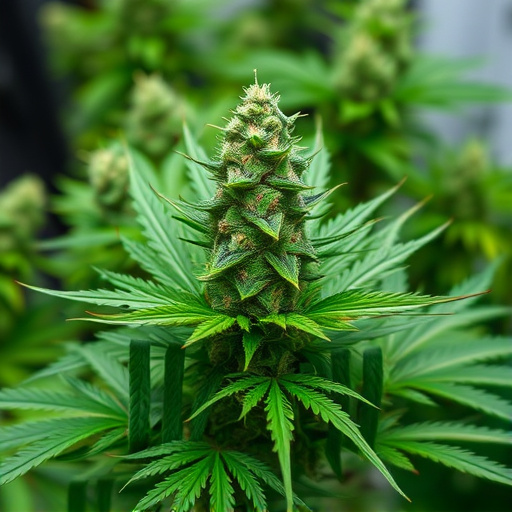
The active compound in cannabis, tetrahydrocannabinol (THC), is well-known for its impact on appetite and hunger sensations. When consumed, THC interacts with the endocannabinoid system, a complex network of receptors and enzymes found throughout the body. This interaction can lead to increased hunger, often referred to as “the munchies.” High THC cannabis strains are particularly associated with this effect due to their higher concentrations of this potent compound.
THC binds to specific receptors in the brain that regulate appetite and pleasure, triggering a cascade of events that stimulate the desire to eat. This mechanism is thought to have evolved as a survival strategy, encouraging users to seek out food and nutrition, especially when stressed or in environments where food may be scarce. As such, it’s no surprise that many individuals turn to high THC cannabis strains when looking to satisfy their appetite.
– Explanation of tetrahydrocannabinol (THC) and its effects on the endocannabinoid system
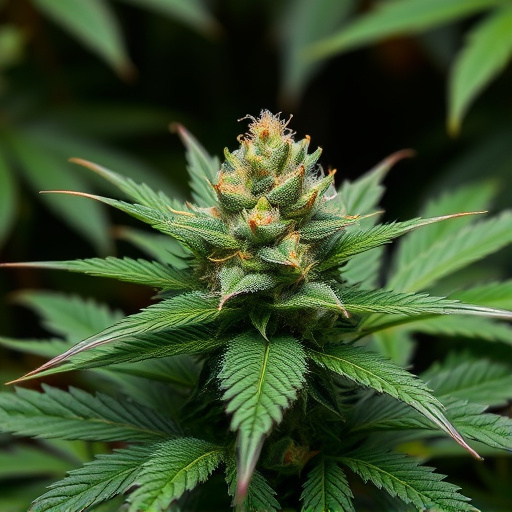
Tetrahydrocannabinol (THC) is the primary psychoactive compound found in cannabis, responsible for the “high” associated with its consumption. It interacts with the endocannabinoid system (ECS), a complex network of receptors and endocannabinoids present throughout the human body. The ECS plays a crucial role in regulating various physiological processes, including appetite, mood, memory, and pain perception.
When THC binds to cannabinoid receptors in the brain, it triggers a cascade of events that can lead to increased hunger. This effect is partly due to the activation of CB1 receptors, which are abundant in the areas of the brain controlling food intake and reward. High THC cannabis strains, known for their potent effects, can significantly stimulate these receptors, resulting in a stronger sensation of hunger or “munchies.” Understanding this interaction between THC and the ECS provides insights into why consuming cannabis can stimulate appetite, offering potential therapeutic benefits for certain medical conditions involving eating disorders or weight loss.
– How THC binds to CB1 receptors in the brain, particularly in areas associated with appetite and pleasure
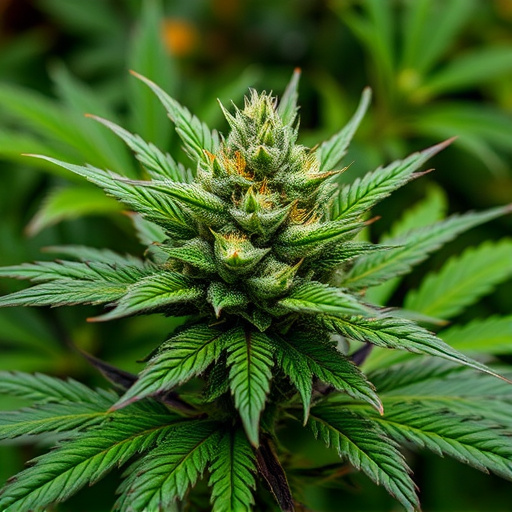
The connection between high THC cannabis strains and increased hunger is rooted in the interaction between tetrahydrocannabinol (THC) and the body’s endocannabinoid system. THC, the primary psychoactive compound in cannabis, binds to CB1 receptors located throughout the brain—particularly in areas that regulate appetite and pleasure. These regions include the hypothalamus, which plays a crucial role in controlling food intake and energy balance.
When THC attaches to CB1 receptors, it triggers a cascade of biochemical reactions. This can lead to increased release of neurotransmitters like dopamine, associated with feelings of pleasure and reward. As a result, users may experience heightened sensory perception, including an intensified desire for food. The interaction between THC and the endocannabinoid system therefore not only affects mood but also influences physiological processes related to eating and satiety.
Cannabis flower’s ability to stimulate hunger is primarily attributed to tetrahydrocannabinol (THC), especially in high THC cannabis strains. By binding to CB1 receptors in areas of the brain associated with appetite and pleasure, THC triggers a physiological response that can leave users feeling ravenous. Understanding this interaction between THC and the endocannabinoid system offers insights into why consuming cannabis may lead to increased hunger, providing potential explanations for its use in certain culinary and medicinal contexts.
